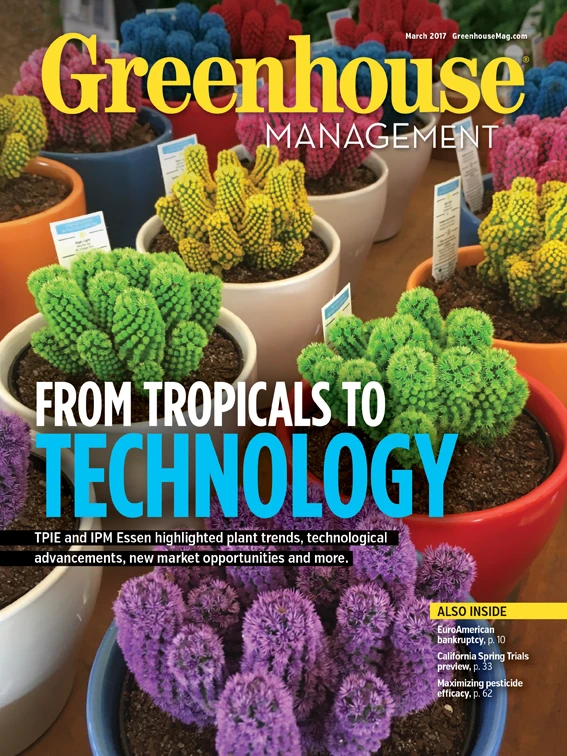
Is it time to consider solar power? Will all greenhouses become electricity generators some day? Improvements in photovoltaic electricity systems are making them more attractive for greenhouses. Photovoltaic systems with efficiencies as high as 40 percent are now available at a cost that results in a reasonable payback. Also, systems that can be integrated with the greenhouse are being installed. Let's look at some of the options.
It would take a very large system to provide all the energy needs for a typical greenhouse, but supplying the electricity needs is definitely feasible. First, we need to establish how much power the greenhouse requires. From my analysis in doing energy audits, the typical greenhouse uses between 1 and 2 kilowatt hours of electricity per square foot of floor area per year (kWh/sq ft-yr).
If conservation measures are utilized, such as roof and sidewall vents, wall insulation, energy screens, accurate controls and a boiler system rather than furnaces or unit heaters, electricity use is decreased to a minimum. Ventilating fans and hot air furnaces use more than ½ kWh/square foot per year each if the greenhouse is operated year-round. Vents and boiler systems reduce this by 75 percent or more.
Depending on the efficiency of the solar collector, the location of the collector and the area of the U.S where the greenhouse is located, a PV system will generate from 10 to 35 kWh/square feet per year. If you operate 10,000 square feet of greenhouse space that uses 1 kWh/square foot per year, and have a collector system that provides 25 kWh/sq ft-yr you would need 27 3-feet by 5-feet solar panels to supply your electricity needs.
There are two basic types of PV systems, one that stores electricity in batteries and the other that connects to the utility power grid. Grid connected systems are the most common for greenhouses. When excess power is being generated, the grid absorbs this. At night when there is no generation, the grid supplies the needed power. This is net metering. As PV systems supply direct current, it has to be converted to alternating current to operate the greenhouse equipment.
Photovoltaic systems can be ground-mounted but these take up considerable land area. Another option is to mount them on an adjacent building such as the headhouse or storage building. As most panels are opaque and block light, they cannot be mounted on the greenhouse without blocking light needed for plant growth.
Poly-silicone, thin film materials are becoming available that allow light through. This material can be placed between two layers of glass or plastic and then used as the glazing on the greenhouse. As it reduces light transmission about 30 percent, only part of the roof is covered with the PV panels. MaineAsia LLC along with the Maine Sustainable Agriculture Society has a grant to build a couple of greenhouses with this technology.
Another company, Solaria Corporation in Fremont, Calif. has developed photovoltaic modules that alter the light spectrum by converting some of the sunlight to power with the rest remaining for plant growth. The pink light transmitted increases production while reducing disease problems.

ULMA Agricola in Sapain has developed greenhouse-mounted, optical lens-based PV modules that allow light through during cloudy weather and divert it to solar cells when it is sunny.
One area that hasn’t been explored much is making energy/shade screens into solar collectors. When a screen is extended to provide shade, it could provide a large area for collection.
One further development that is being researched is a clear spray-on PV material that will generate electricity without much reduction in light transmission. This could make all greenhouses electricity generators.
The future looks bright for converting sunlight into electricity. Photovoltaic systems could help to reduce greenhouse operating costs.

Explore the March 2017 Issue
Check out more from this issue and find your next story to read.
Latest from Greenhouse Management
- The Growth Industry Episode 3: Across the Pond with Neville Stein
- A nation of gardeners: A history of the British horticulture industry
- How Izel Native Plants is solving the native plant conundrum
- Trends: Proven Winners 2025 perennial survey shows strong demand
- Online registration opens for 2025 Farwest Show
- Cashing in with customization
- The Ball Seed Difference
- Lawsuit challenges new H-2 visa rules





